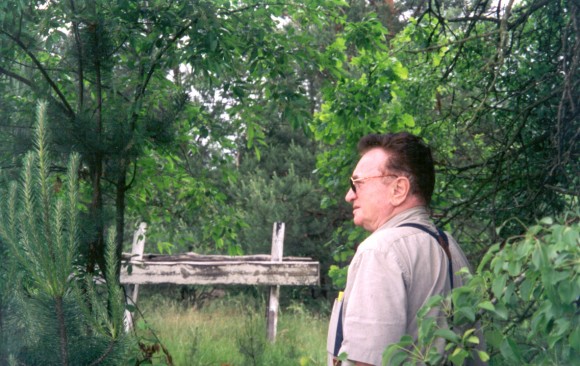Sobibór: Unearthing Evidence and Honoring Memory
September 22, 2014
Last week, media around the world reported on the unearthing of the foundations of the Sobibór gas chambers. The discovery is part of an ongoing archaeological project conducted by Yad Vashem’s International Institute for Holocaust Research, the German-Polish Foundation and the Majdanek State Museum.
Most people have probably never heard of Sobibór. Located in what was the Lublin district of Nazi occupied Poland, near Poland’s present day border with Ukraine, the camp was built in 1942 for the sole purpose of mass murder. At Sobibór, there was no process of “selection” of who would live and who would die. In other words, at Sobibór, there was almost no chance for survival. Most who arrived, some 250,000 Jews, were sent directly to the gas chambers where they were killed by carbon monoxide. Only a very few prisoners were taken out of the line to work at such tasks as sorting clothes or burning documents.
My friend Thomas “Toivi” Blatt was one of those few chosen to work. He was 15 years old when he arrived at Sobibor in April 1943. His parents and younger brother were sent immediately to their deaths. Tom was one of the 300 prisoners who took part in the camp uprising in October 1943, and, despite being shot by a farmer who had initially hidden him, he was one of about 50 prisoners to survive the war. Only four or five Sobibór survivors are alive today. Tom is one of them.
In summer 2001 I went to Sobibór with Tom. We walked through the area that once was the camp, which the Nazis razed and planted with trees after the revolt in an effort to hide the murders they had committed. In the photo, Tom is standing at what was, quite literally, the end of the road. It was the place where the train tracks ended and people began the walk to their deaths, deceived by the Nazis into believing that they were on their way to showers and work.
I will never forget the moment when Tom stopped, bent down, and brushed aside some earth. When he stood up, he asked me to put out my hand. He placed into my palm small fragments I could not at first identity. When Tom said, “These could be my brother and parents,” I realized the fragments he placed in my hand were charred bits of human bone.
Tom has spent almost 70 years fighting to have the Sobibór site preserved and protected. No one has done more. It is perhaps ironic that only by digging deep to find the foundations of death will the evidence of death that lies so close to the surface at last receive respect.
Those of you interested in learning more may want to read The Jerusalem Post article, Jewish bones in Sobibór to be buried 70 years later and the Reuters news article Archaeologists uncover buried gas chambers at Sobibór death camp.

